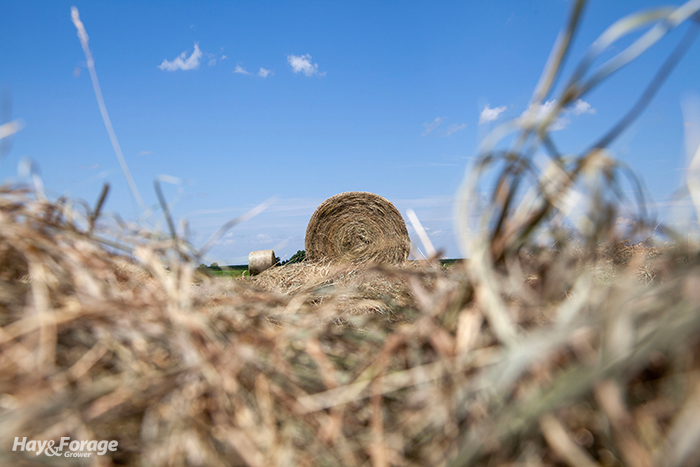
People never call their power company to give them props because the lights are on and their food is cold; however, should the lights go out and the milk spoil, phone lines become jammed with disgruntled electricity users.
I’ve found the same sort of thing to be true with commodity prices — no complaints when they’re high, lots of grumbling when they’re low. It’s just human nature.
Along these same lines, in my 40-plus years in the forage industry, I’ve never had a farmer complain that their hay quality is too good. On the flip side, I’ve heard plenty of bemoaning about poor hay quality.
“Suggesting poor-quality hay is better than snowballs simply doesn’t suffice,” says Stan Smith, who is a county educator with Ohio State University Extension. “The inability to evaluate and efficiently manage hay quality can easily result in loss of cow condition, breed back issues, failure to successfully gestate and retain the fetus until calving, poor-quality colostrum, and ultimately poor calf health and performance next year.”
To mitigate the issues associated with feeding poor-quality hay to beef cattle this winter, extension specialists at the University of Georgia suggest that cattlemen heed the following list of recommendations if forage quality is subpar.
Know your resources
Obtaining an accurate forage test on stored hay is perhaps the most important step. It’s impossible to formulate a diet without knowing the nutrient profile of the hay being fed. Along with knowing forage quality, determine what supplement options are available and at what price. The final goal is to develop a feeding regime that is both nutritionally and economically sound.
Monitor body condition
Maintain cows at a body condition score (BCS) of 5 or greater. This is critical to realize acceptable conception rates and calving intervals. Brood cows with a BCS of 5 or greater are better able to withstand winter weather extremes or short-term nutritional deficits. To recover a cow’s BCS from 4 to 5 requires a ration that is 9 percentage units higher in total digestible nutrients (TDN) above the maintenance requirement for about 70 days.
Pick feed additives carefully
Don’t use additives that boost the intake of poor-quality hay. If forage quality is exceptionally low, higher feed intakes of hay that is mostly indigestible will raise the risk of an impacted digestive tract, possibly leading to death. Cattle can starve to death on a full stomach of indigestible, poor-quality hay.
Consider grain- or by-product-based supplements
Fiber-based energy supplements are often a better choice than liquid feeds or protein blocks when also feeding low-quality hay. Supplements such as soybean hulls, corn gluten feed, distillers grains, citrus pulp, and whole cottonseed are preferable to those supplements with high levels of starch (corn or oats) or simple sugars (molasses). The fiber-based supplements will help to maintain a more favorable rumen environment, and in many cases, they are more cost-effective.
Use winter annuals judiciously
When hay quality is low, there is the temptation to overgraze winter annuals. If winter pastures are available but not at a quantity sufficient to sustain the herd, consider limit grazing the winter annuals for only a few hours per day. Though this may not be enough to completely meet nutrient requirements, the addition of winter grazing to the diet will help to prevent digestive impaction issues and improve the ruminal fermentation of both forage sources.
Don’t background calves on poor-quality hay
Though backgrounded calves often generate a premium price over weaned calves, this advantage is lost if the excessive supplement costs needed when feeding low-quality hay more than offset the higher market price. In this situation, it’s often more profitable to sell calves shortly after weaning unless higher quality hay is available for feeding.

